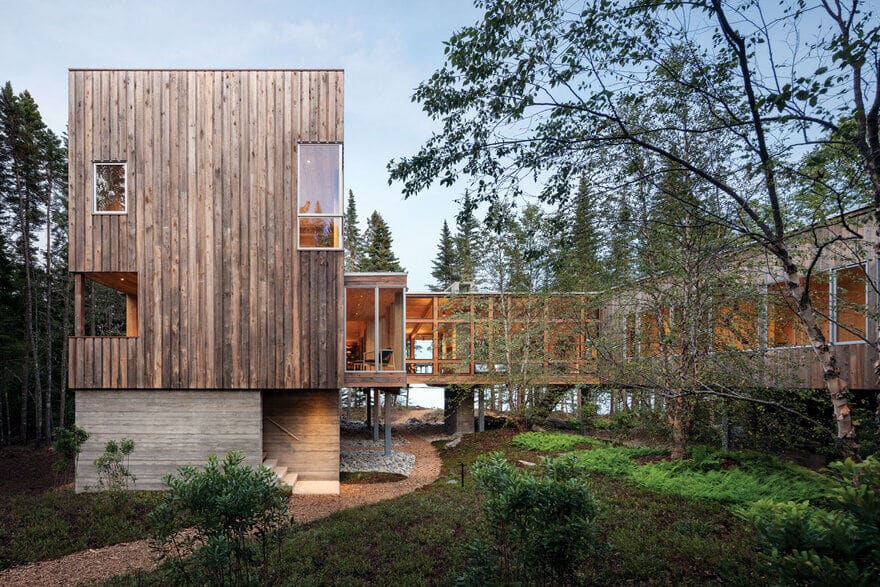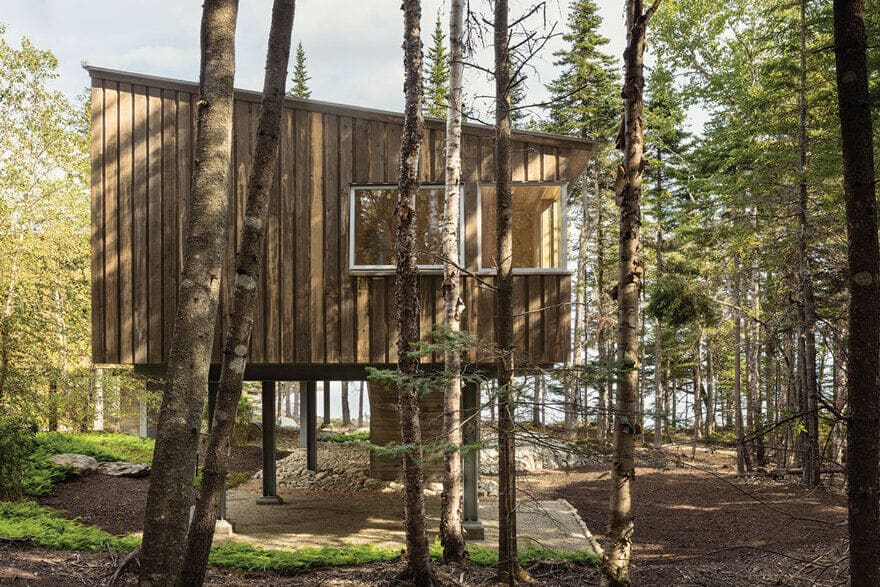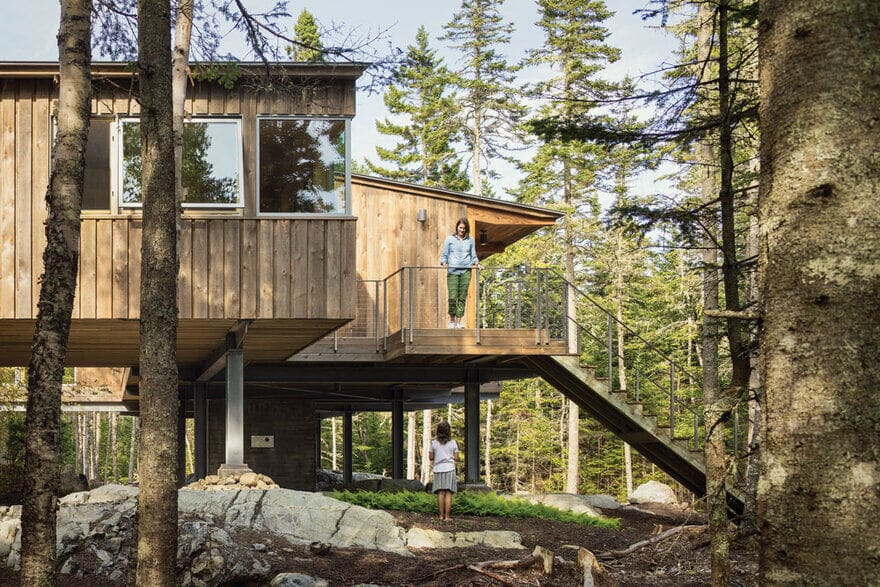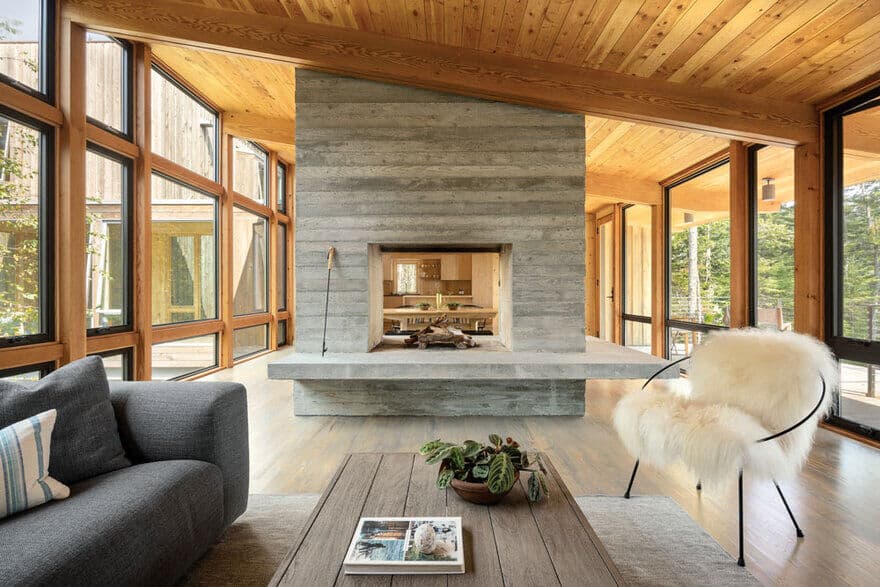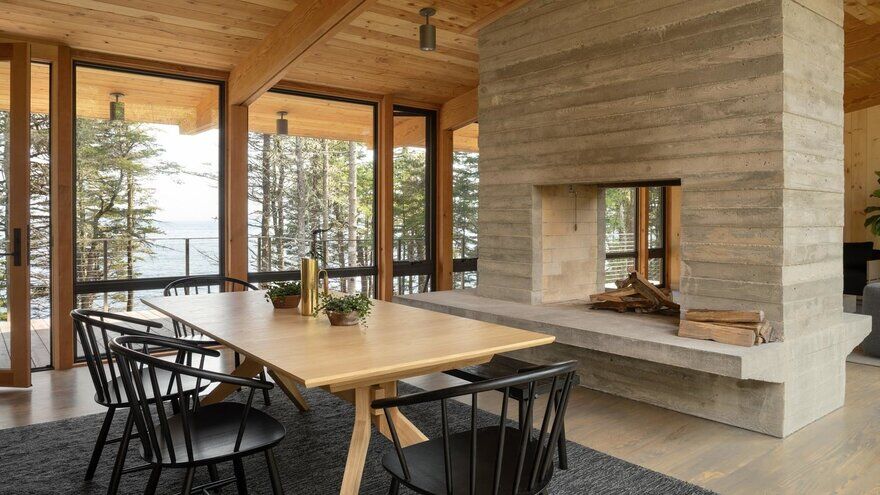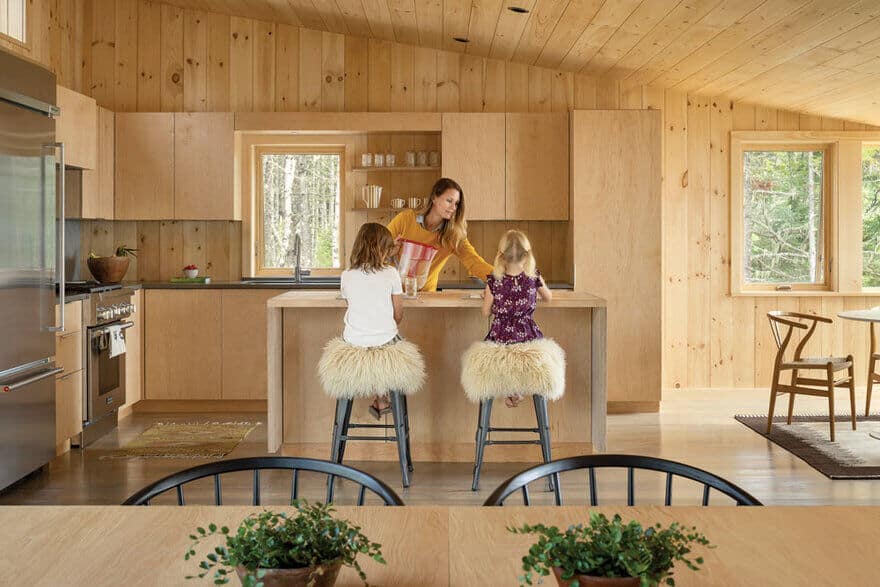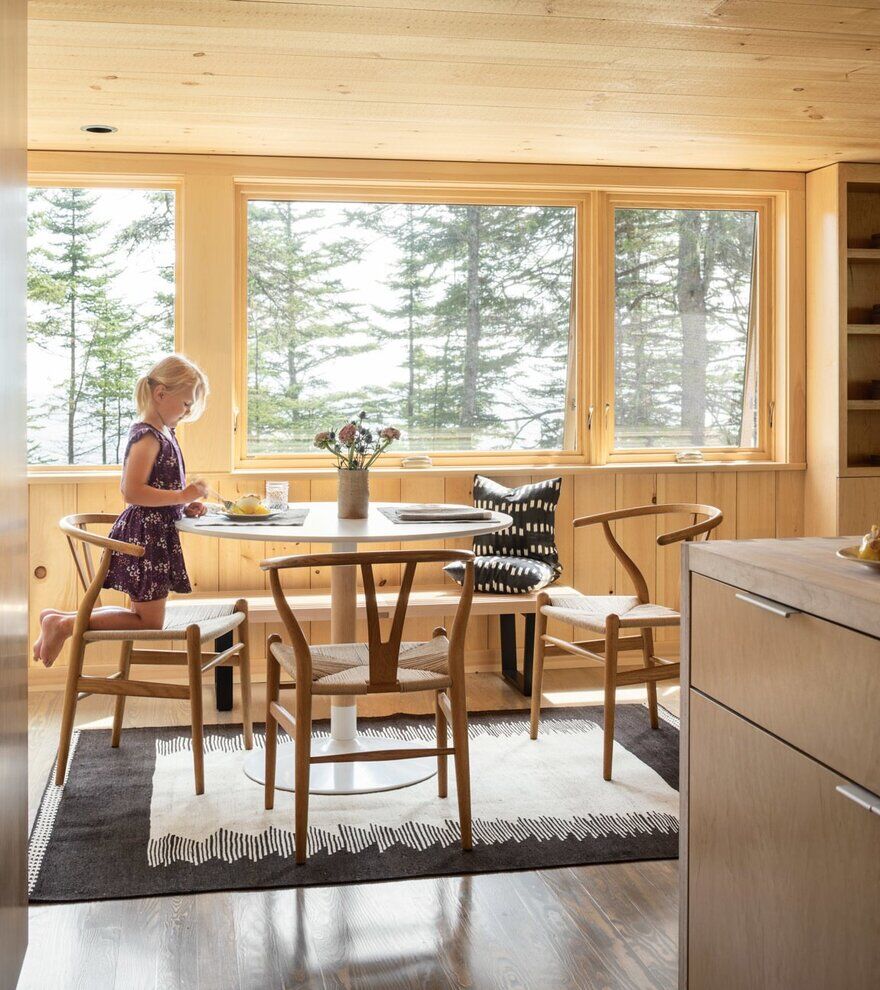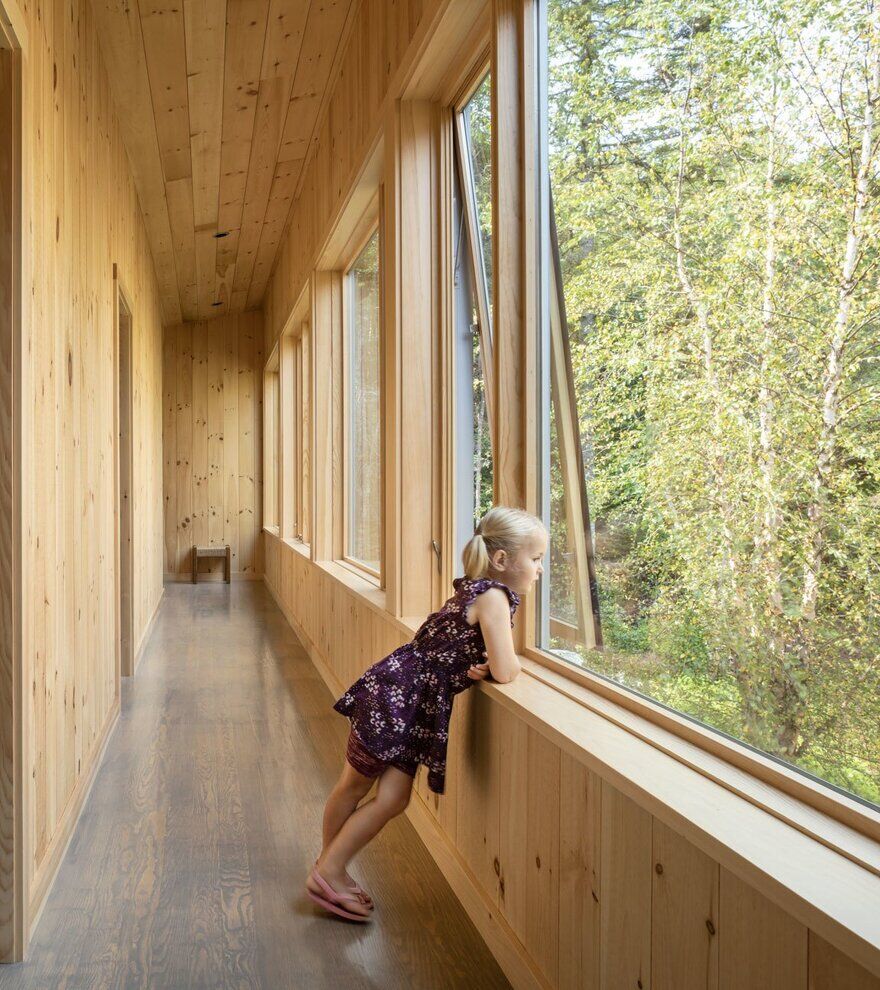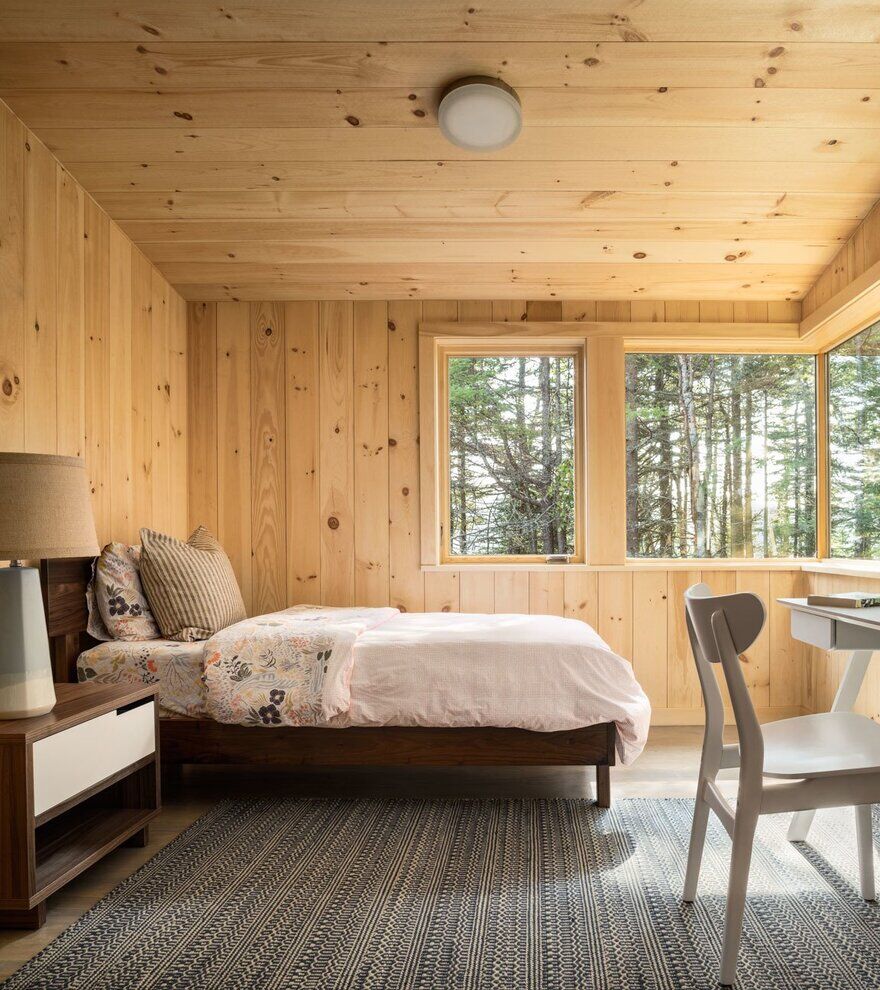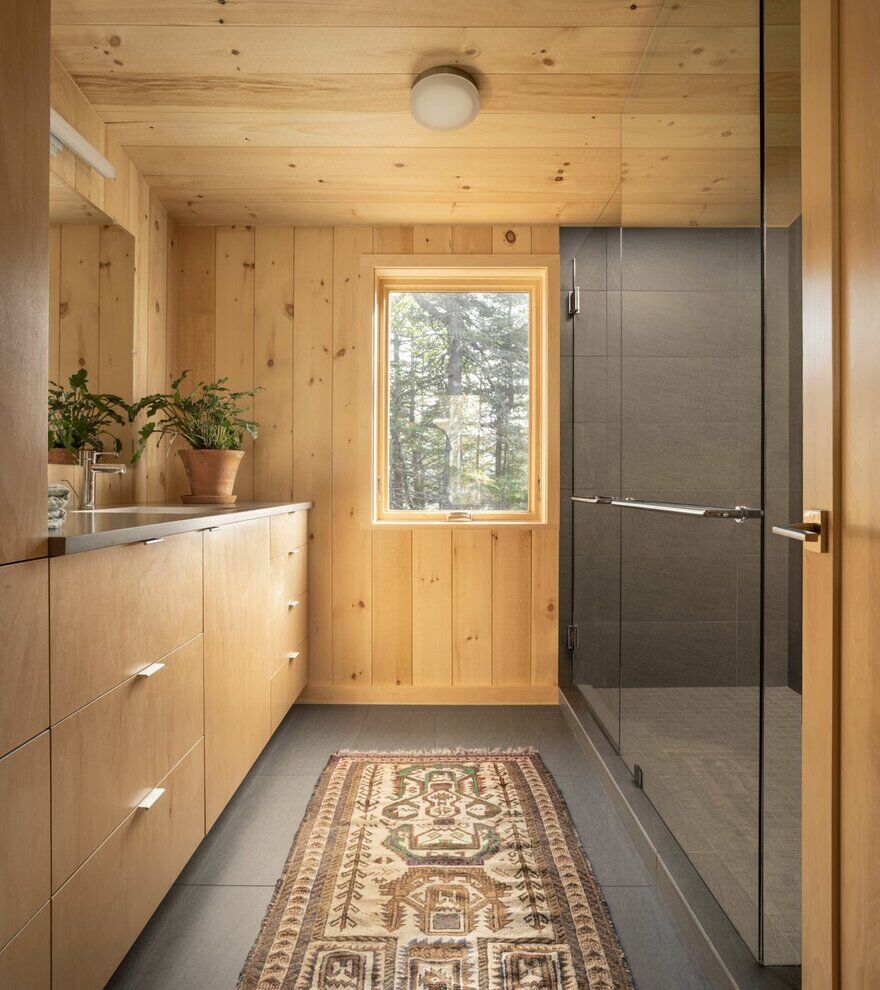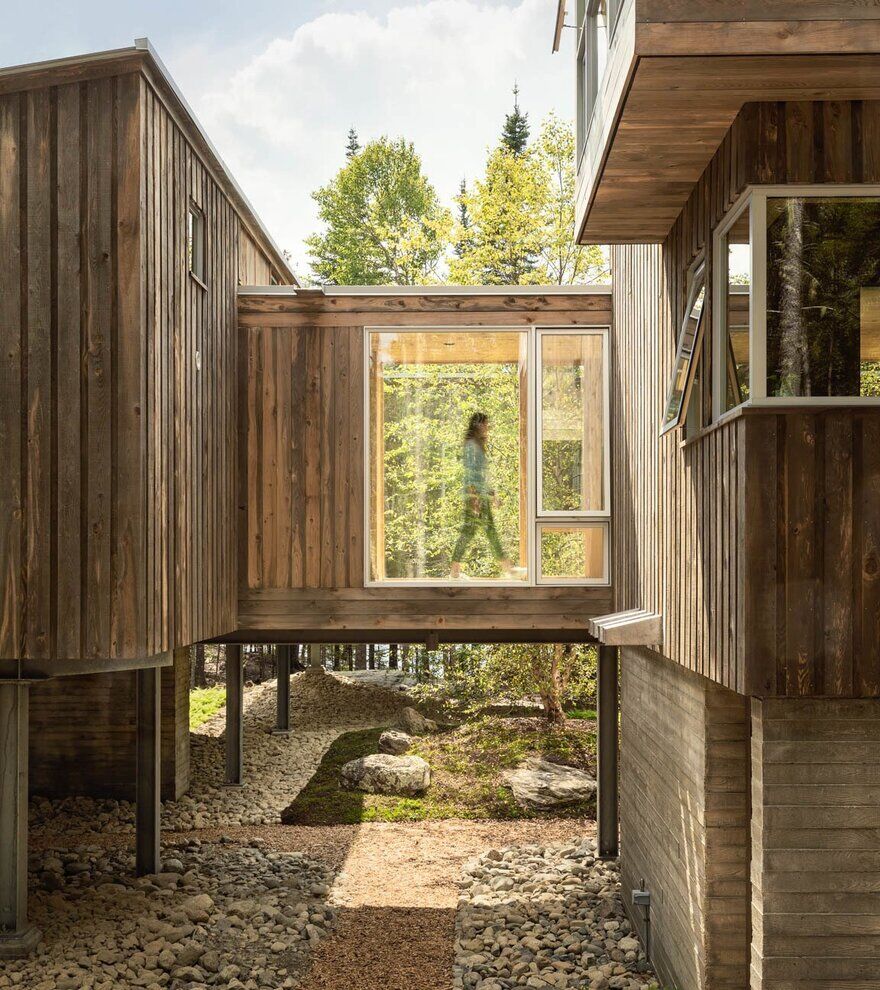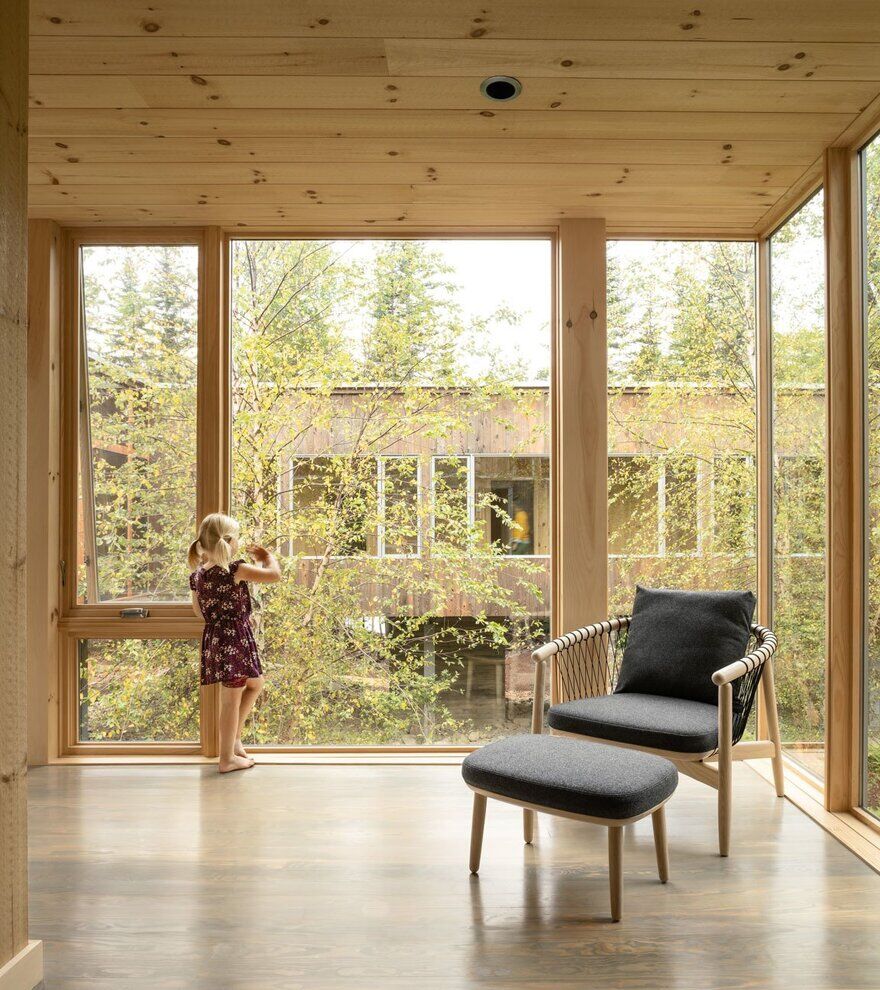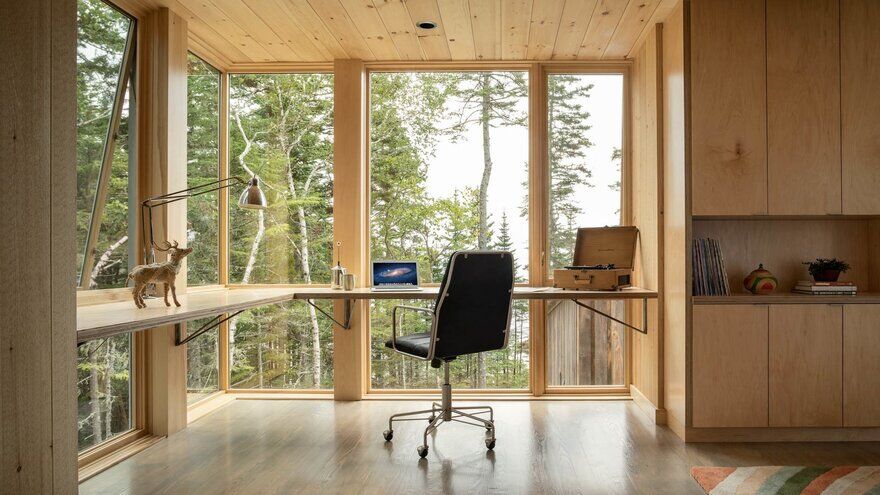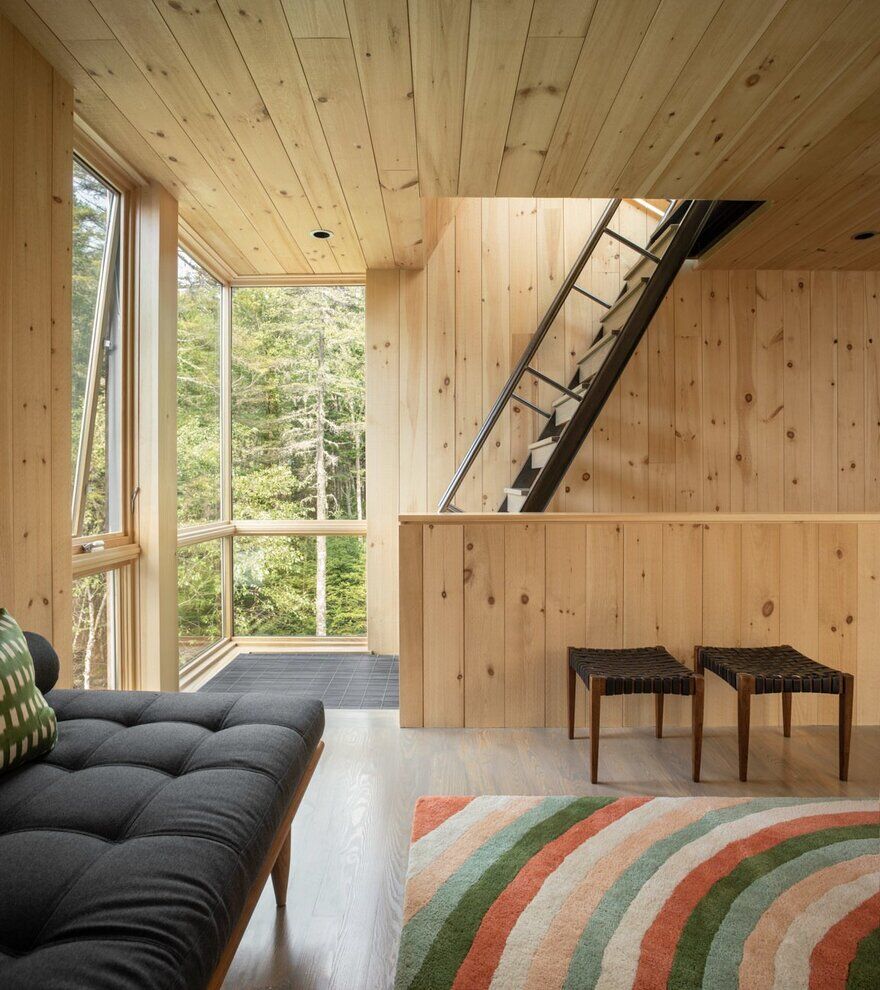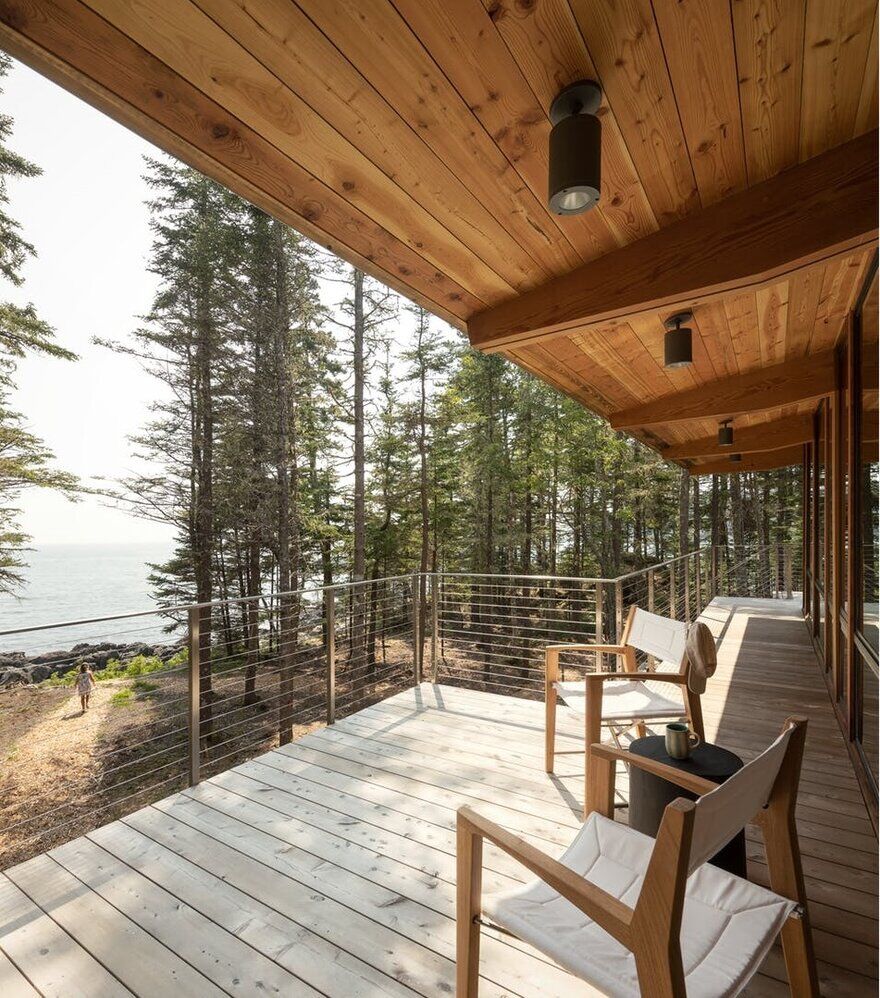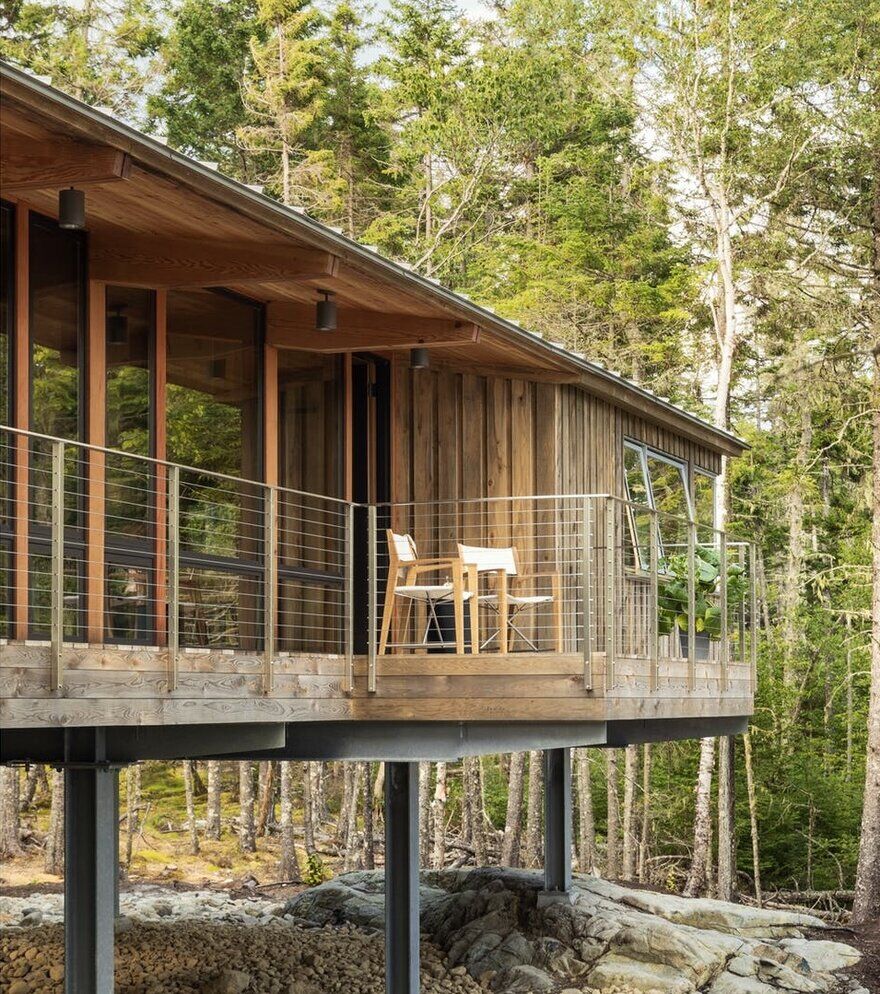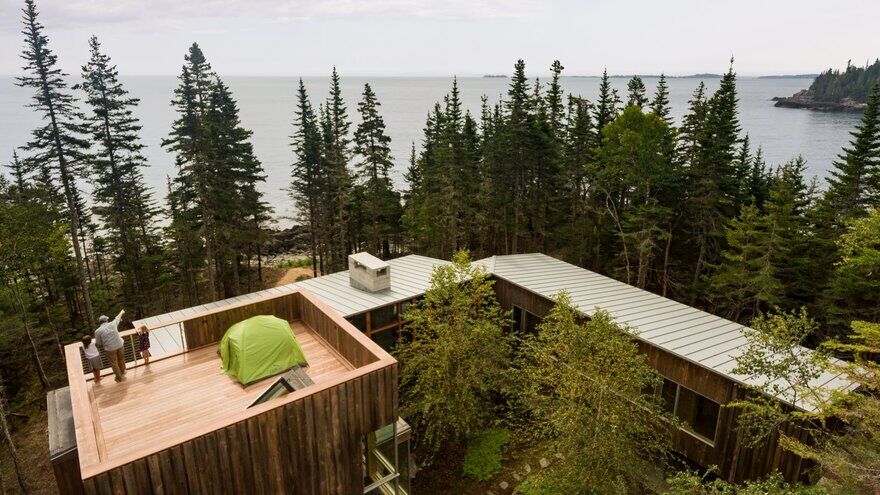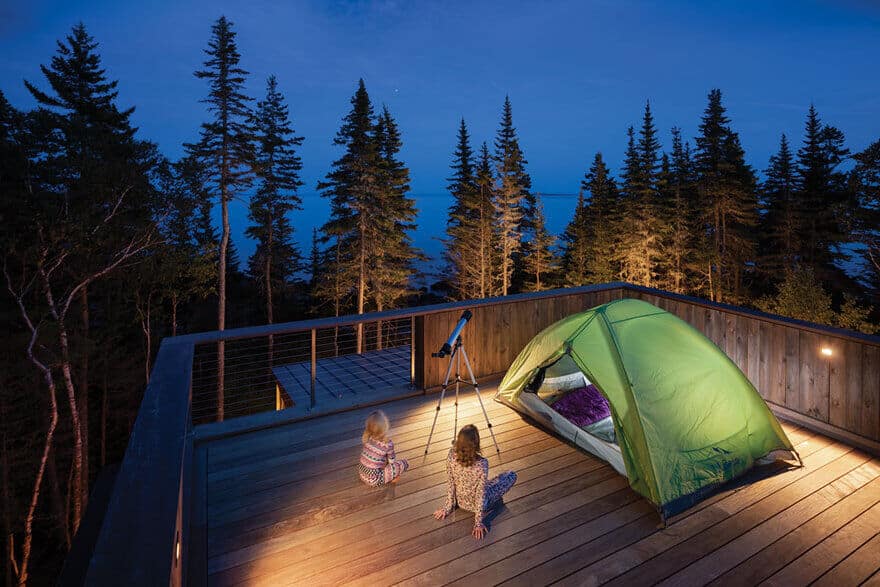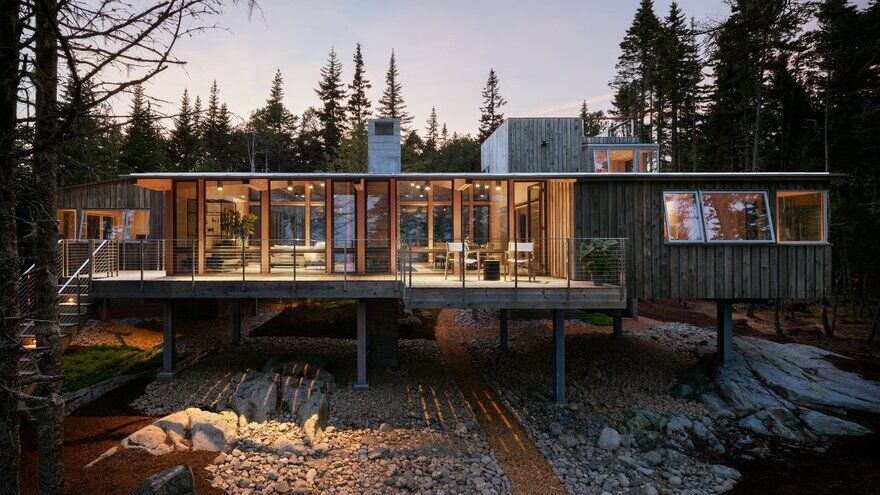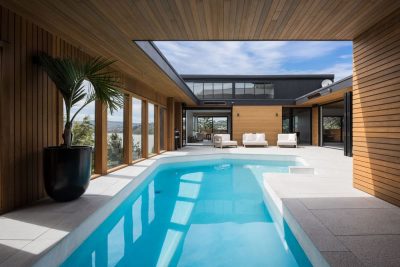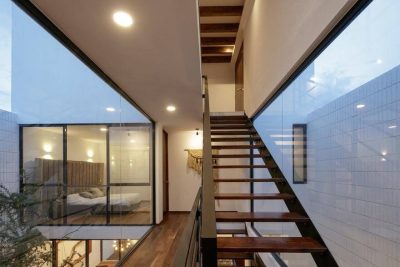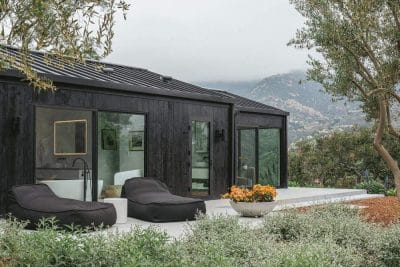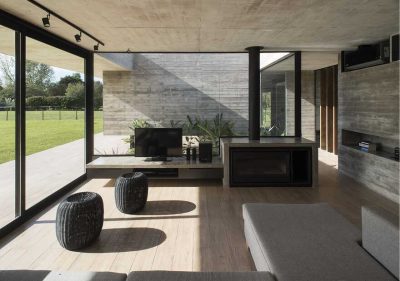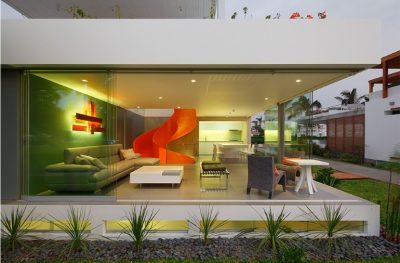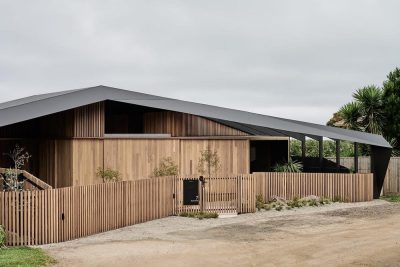Project: Englishman Bay Retreat
Architects: Whitten Architects
General Contractor: Nate Holyoke Builders
Structural Engineer: Albert Putnam Associates
Interior Furnishings: Krista Stokes
Landscape Design and Installation: Atlantic Landscape Construction
Location: Englishman Bay, Maine, United States
Year 2018
Photography: Trent Bell Photography
Text by Whitten Architects
North of Acadia National Park, Englishman Bay is known for its rocky, rugged coastline and pristine natural landscape. An undulating shoreline made up of protected coves and calm waters makes this Downeast area a favorite among sailors and kayakers.
On a coastal site with dense woods, our client would often walk from his family’s camp through the spruce and birch to a secluded pebble beach, over time wearing a path under the canopy of trees. Decades later, with young children of his own, he approached us to design a home for his family along the same well-worn path he traversed as a child summer after summer.
Our clients envisioned a home of simple forms and a rustic Maine camp feel. They sought warm, inviting natural materials that would blend in with the surrounding forest. It was important to them that the house have a low environmental impact, and that most of the surrounding trees be kept intact while allowing gaps for ocean views. Also on their wish list was an open-platform deck up high from which they could stargaze with their children. They wanted this rooftop to be accessible via a “hatch” at the top of a staircase, reminiscent of climbing up out of an old wooden ship to the top deck.
After walking the forested property and examining its features, we noticed that the site started off wooded and dark, but as you approached the water, it slowly opened up to light and views. Our site-specific design sought to maintain and enhance that narrative connecting the shady woods to the sparkling waterfront. In addition, we found a 10-foot-tall rock outcrop at the waterfront from which panoramic views were visible. This informed our decision to perch the house on steel columns one story in the air. This treehouse-like posture allows for better views of a protected cove on one side and open ocean with a distant island lighthouse on the other. The use of natural materials and ample glass gives the house a transparent nature, camouflaging it within the trees and allowing it to unfold gradually rather than reveal itself all at once. The design preserves the pattern of use the family had established from walking between properties over many years and brings the path inside so that the house becomes an extension of it.
Looking at the house as an extension of the path, we designed a long, thin U‑shaped building that encircles an outdoor courtyard. An elevated treehouse quality means that as you move through the house — leaves brushing up against windows here and there — you feel as though you’re still walking through the woods. We arranged the spaces within the house along the path of the sun, so that eastern morning light comes in through the kitchen, and evening sunsets are visible in the bedroom wing. In addition, the quiet part of the house faces the protected cove, while the public part faces the wide-open ocean.
The Englishman Bay Retreat is anchored on one side by an entry tower resting on a board-formed concrete base. Above the entry is an office with a staircase to the rooftop deck. By locating this perch at the top of the entry tower, we maximized views through and above the tree canopy. From inside the entry tower, you simultaneously can see the path ahead to the next room, views outside the house, and views to farther-away parts of the house as well. A parent in the entry, for example, can look out the window across the courtyard and see a child in the bedroom wing. This allows for playful interactions throughout.
A daylight-filled bridge links the entry tower to the kitchen, with its locally built Baltic birch cabinetry and walls clad in eastern white pine. Separated by a sliding door, a generous three-season porch with tall windows on either side connects the kitchen and dining area with the bedroom wing. Projecting off of it, a cantilevered balcony looks out onto the path and pebble beach beyond. A double-sided fireplace features cast-in place-board form concrete. The bedroom wing features a master suite and two kids’ bedrooms with a shared bath. In the master, corner windows allow for the maximum amount of view, making the room feel open and spacious. Like the house itself, the views are carefully curated so that pockets of ocean, distant headlands, and sky are visible.
The use of natural materials, many of them local, is prevalent throughout the house. Exterior materials that have long been a durable mainstay in coastal New England buildings further connect the property to the land. The outside of the house is clad in eastern hemlock from a local Maine wood mill with a natural wood preservative applied to protect it and give it a weathered patina. Interior walls and ceiling are predominantly locally sourced eastern white pine while naturally rot-resistant Douglas fir was chosen for structural columns and beams.
For our clients, this home is not only a place for their family to gather, but represents an intersection of paths — the old and the new, the well-worn and the just beginning.
In 2019, the Englishman Bay Retreat received AIA Maine’s highest award for residential design, the Honor Award for Design Excellence, as well as the People’s Choice Award. The project also received a Merit Award as part of the 2019 AIA New England Design Awards.

